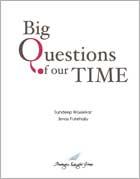Tracking India�€™s Transformation
 |
August 2007
By Ilmas Futehally
|
I recently travelled to Indore, after a gap of exactly one year. It was fascinating to mark the changes that that have taken place in this Central Indian city in the last 365 days. There seems to be a boom in construction activity. The number and kind of cars on the roads seem to have undergone a change. There are hoardings aimed at young people for enrolling into courses aimed at the aviation, telecom, insurance and fashion industry. Some of these changes have resulted in the real estate prices in the city skyrocketing.
Indore, however, is not an exception. This silent transformation is taking place in many towns and cities in varied parts of India. Alibagh, a sleepy coastal town about 120 km away from Mumbai is one of them. As are Aligarh, Alleppey, and Ahmadnagar. In order to try and understand what was happening on a country wide scale, I went back to take a re-look at the report that Strategic Foresight Group had published in 2002- Rethinking India�€™s Future: Prosperity of the Periphery.
In this report, we introduced the concept of the Business Class, Bike and Bullock Cart economy in order to understand how the Indian economy ticked. At that time there were 20 million, 150 million and 840 million people in the Business, Bike and Bullock Cart economies respectively. This corresponded with 2 per cent, 15 per cent and 83 per cent of the population. Some of the commodities that we looked at to delineate the Business Class economy were internet usage, ownership of personal computers, cars, travel by air, both domestically as well as internationally (not necessarily by business class). Families belonging to the Bike economy owned colour televisions, had LPG gas connections and had homes with all basic amenities such as running water, sanitation and electricity. Families belonging to the Bullock Cart economy owned black and white televisions, radios and pucca houses, but without the basic amenities.
Interestingly, at the beginning of the decade, there were about 7 million mobile phone subscribers. At this time, the mobile phone was a toy of the Business Class. Today, there are 185 million mobile phone subscribers (and growing at the rate of 5-6 million per month) and it very much a part of the Bike economy fuelling the growth of diverse small and medium scale enterprises. Other figures have changed dramatically too. The total population of India has gone up from 1010 million in 2002 to 1130 in 2007. Today there are 32 million people in the Business Class, 240 million in the Bike economy and 858 million in the Bullock Cart economy corresponding to 2.8 per cent 21.2 per cent and 76.0 per cent respectively. Thus in the last six years, 7 per cent of the population (corresponding to 100 million people �€“ almost four fifth of Japan�€™s population) have shifted from the Bullock Cart to the Bike and Business Class Economy. This is the transformation that is visible in the streets of our larger towns and smaller cities like Indore, Alibagh and Alleppey.
It would be interesting to see the reasons behind this transformation. In the abovementioned report, Strategic Foresight Group had recommended bringing about a virtuous cycle of an agro-industrial revolution leading to increased agricultural productivity, setting up of growth centres in rural areas and the need to change the policy framework developing new kinds of partnerships between the government, processing companies, entrepreneurs and producers.
To some extent this has begun to happen: A number of large corporates- both Indian and Multi-national-are entering the agro-processing industry on a very large scale. From Reliance Select and Reliance Fresh, ITC Choupal Saagar, Bharti�€™s Field Fresh, a new vocabulary is beginning to take hold. The bigwigs of India Inc are able to move into the agricultural sector on a massive scale, providing support to farmers, cold chains for transportation and retail outlets for agricultural produce in a manner that is unprecedented. As an example, by 2010, Reliance Fresh plans to have its operations in 784 towns and cities.
Rethinking India�€™s Future: Prosperity of the Periphery is a strong advocate of bringing about a new green revolution. This idea seems to have taken root. If the green revolution continues, with the economy growing at 7-8 per cent per annum, in 2025 India will have 174 million people in the Business Class economy, 366 million in the Bike economy and 810 million in the Bullock Cart economy; corresponding to 13 per cent, 27 per cent and 60 per cent respectively. This means that a further 150 million people (or the entire population of Bangladesh) will be lifted out of the Bullock Cart economy.
When we first published our study in 2002, there were 840 million people in the Bullock Card economy. This number is almost static in 2007 and we expect that 810 million people will still belong to this category in 2025. Thus, despite the transformation, the absolute size of India�€™s Bullock Cart economy may constantly remain in the region of 800-850 million. To break this deadlock, transformation of 100 million people every six years is not enough. We need to shift at least 200 million every six years from Bullock Cart to Bike Economy. Do we have the vision and courage to bring about such a radical shift?
Related Publications
-
.jpg&maxw=50)
Big Questions of Our time: The World Speaks, 2016
Download:Big Questions of Our time: The World Speaks _Full Report
-

-

Second Freedom South Asian Challenge 2005-2025, 2005
read more
Download:Second Freedom South Asian Challenge 2005-2025 Full Report
Related latest News
Related Conferences Reports
-

Global Challenges Conference, October 2016
Download:Global Challenges Conference Report
-

Conference on Responsibility to the Future: Business, Peace and Sustainability, June, 2008
Download:Global Security and Economy: Emerging Issues


